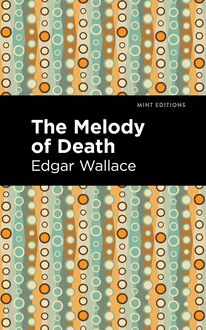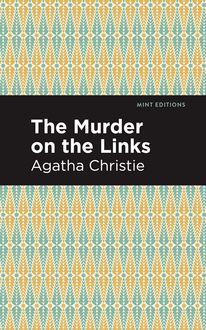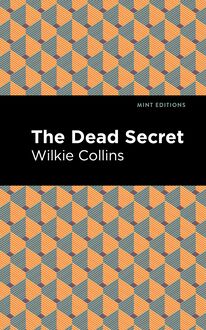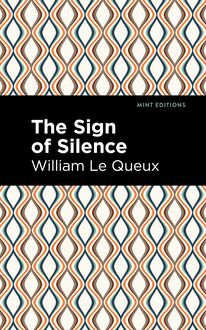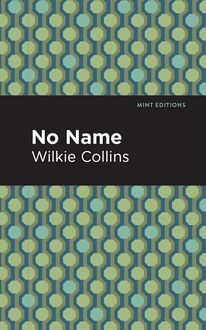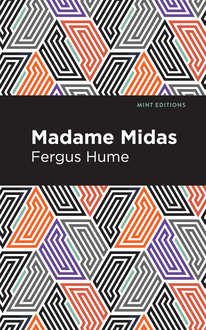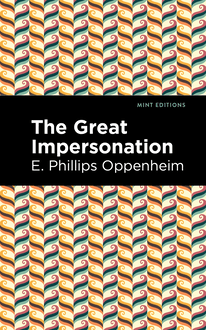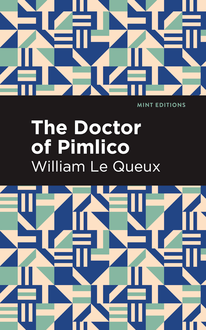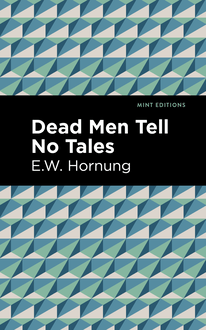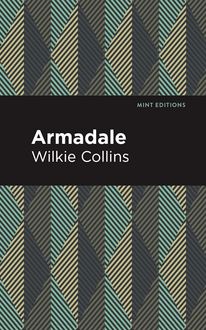-
 Univers
Univers
-
 Ebooks
Ebooks
-
 Livres audio
Livres audio
-
 Presse
Presse
-
 Podcasts
Podcasts
-
 BD
BD
-
 Documents
Documents
-
- Cours
- Révisions
- Ressources pédagogiques
- Sciences de l’éducation
- Manuels scolaires
- Langues
- Travaux de classe
- Annales de BEP
- Etudes supérieures
- Maternelle et primaire
- Fiches de lecture
- Orientation scolaire
- Méthodologie
- Corrigés de devoir
- Annales d’examens et concours
- Annales du bac
- Annales du brevet
- Rapports de stage
La lecture à portée de main
Vous pourrez modifier la taille du texte de cet ouvrage
Découvre YouScribe en t'inscrivant gratuitement
Je m'inscrisDécouvre YouScribe en t'inscrivant gratuitement
Je m'inscrisEn savoir plus
Vous pourrez modifier la taille du texte de cet ouvrage
En savoir plus

Description
The Mystery of a Hansom Cab (1886) is a mystery novel by Fergus Hume. An immediate bestseller for Hume, The Mystery of a Hansom Cab is a gripping novel with an atmospheric intensity and tightly wound mystery worthy of the best of Victorian fiction. Published the year before Arthur Conan Doyle’s debut, A Study in Scarlet (1887), Hume’s novel became the first international bestseller to be published in Australia. Adapted countless times for film, theater, radio, and television, The Mystery of a Hansom Cab is a classic detective story and a landmark in Australian literature.
In Melbourne, Australia, a cabman stops to pick up a presumably drunk passenger. Helped into the cab by an unknown man, who claims to be a friend, the gentleman settles in for the ride homeward. Accustomed to such things, especially in the darkness of early morning, the cabman begins his ride. When he asks his passenger for directions, however, he receives no response, and turns to find that the man is dead. He drives straight to the local police station, where Detective Gorby begins his investigation. Was the friend in fact the murderer, or was he simply a good Samaritan who believed he was helping a drunk man make it home? When the killer is discovered, however, the mystery remains. Over the story looms the shadow of the Frettlby family, whose secrets threaten to smother all of Melbourne. The Mystery of a Hansom Cab is a masterpiece of slow-burning suspicion between the rich and the poor, a story of law and those willing to break it.
With a beautifully designed cover and professionally typeset manuscript, this edition of Fergus Hume’s The Mystery of a Hansom Cab is a classic of Australian mystery and detective fiction reimagined for modern readers.
Sujets
Informations
| Publié par | Mint Editions |
| Date de parution | 09 mars 2021 |
| Nombre de lectures | 0 |
| EAN13 | 9781513278834 |
| Langue | English |
Informations légales : prix de location à la page 0,0500€. Cette information est donnée uniquement à titre indicatif conformément à la législation en vigueur.
Extrait
The Mystery of a Hansom Cab
Fergus Hume
The Mystery of a Hansom Cab was first published in 1886.
This edition published by Mint Editions 2021.
ISBN 9781513278377 | E-ISBN 9781513278834
Published by Mint Editions ®
minteditionbooks.com
Publishing Director: Jennifer Newens
Design & Production: Rachel Lopez Metzger
Project Manager: Micaela Clark
Typesetting: Westchester Publishing Services
C ONTENTS P REFACE I. W HAT THE A RGUS S AID II. T HE E VIDENCE AT THE I NQUEST III. O NE H UNDRED P OUNDS R EWARD IV. M R . G ORBY M AKES A S TART V. M RS . H AMILTON U NBOSOMS H ERSELF VI. M R . G ORBY M AKES F URTHER D ISCOVERIES VII. T HE W OOL K ING VIII. B RIAN T AKES A W ALK AND A D RIVE IX. M R . G ORBY IS S ATISFIED AT L AST X. I N THE Q UEEN ’ S N AME XI. C OUNSEL FOR THE P RISONER XII. S HE WAS A T RUE W OMAN XIII. M ADGE M AKES A D ISCOVERY XIV. A NOTHER R ICHMOND IN THE F IELD XV. A W OMAN OF THE P EOPLE XVI. M ISSING XVII. T HE T RIAL XVIII. S AL R AWLINS T ELLS ALL SHE K NOWS XIX. T HE V ERDICT OF THE J URY XX. T HE “A RGUS ” G IVES ITS O PINION XXI. T HREE M ONTHS A FTERWARDS XXII. A D AUGHTER OF E VE XXIII. A CROSS THE W ALNUTS AND THE W INE XXIV. B RIAN R ECEIVES A L ETTER XXV. W HAT D R . C HINSTON S AID XXVI. K ILSIP HAS A T HEORY OF H IS O WN XXVII. M OTHER G UTTERSNIPE J OINS THE M AJORITY XXVIII. M ARK F RETTLBY HAS A V ISITOR XXIX. M R . C ALTON ’ S C URIOSITY IS S ATISFIED XXX. N EMESIS XXXI. H USH -M ONEY XXXII. D E M ORTUIS N IL N ISI B ONUM XXXIII. T HE C ONFESSION XXXIV. T HE H ANDS OF J USTICE XXXV. “T HE L OVE THAT L IVES ”
P REFACE
In its original form, “The Mystery of a Hansom Cab” has reached the sale of 375,000 copies in this country, and some few editions in the United States of America. Notwithstanding this, the present publishers have the best of reasons for believing, that there are thousands of persons whom the book has never reached. The causes of this have doubtless been many, but chief among them was the form of the publication itself. It is for this section of the public chiefly that the present edition is issued. In placing it before my new readers, I have been asked by the publishers thoroughly to revise the work, and, at the same time, to set at rest the many conflicting reports concerning it and myself, which have been current since its initial issue. The first of these requests I have complied with, and the many typographic, and other errors, which disfigured the first edition, have, I think I can safely say, now disappeared. The second request I am about to fulfil; but, in order to do so, I must ask my readers to go back with me to the beginning of all things, so far as this special book is concerned.
The writing of the book was due more to accident than to design. I was bent on becoming a dramatist, but, being quite unknown, I found it impossible to induce the managers of the Melbourne Theatres to accept, or even to read a play. At length it occurred to me I might further my purpose by writing a novel. I should at all events secure a certain amount of local attention. Up to that time I had written only one or two short stories, and the “Cab” was not only the first book I ever published, but the first book I ever wrote; so to youth and lack of experience must be ascribed whatever was wanting in the book. I repeat that the story was written only to attract local attention, and no one was more astonished than I when it passed beyond the narrow circle for which it had originally been intended.
My mind made up on this point, I enquired of a leading Melbourne bookseller what style of book he sold most of. He replied that the detective stories of Gaboriau had a large sale; and as, at this time, I had never even heard of this author, I bought all his works—eleven or thereabouts—and read them carefully. The style of these stories attracted me, and I determined to write a book of the same class; containing a mystery, a murder, and a description of low life in Melbourne. This was the origin of the “Cab.” The central idea i.e. the murder in a cab—came to me while driving at a late hour to St. Kilda, a suburb of Melbourne; but it took some time and much thought to work it out to a logical conclusion. I was two months sketching out the skeleton of the novel, but even so, when I had written it, the result proved unsatisfactory, for I found I had not sufficiently well concealed the mystery upon which the whole interest of the book depended. In the first draft I made Frettlby the criminal, but on reading over the M.S. I found that his guilt was so obvious that I wrote out the story for a second time, introducing the character of Moreland as a scape-goat. Mother Guttersnipe I unearthed in the slums off Little Bourke Street; and I gave what I am afraid was perhaps too vivid a picture of her language and personality. These I have toned down in the present edition. Calton and the two lodging-house keepers were actual personages whom I knew very well, and I do not think I have exaggerated their idiosyncracies, although many have, I believe, doubted the existence of such oddities. All the scenes in the book, especially the slums, are described from personal observation; and I passed a great many nights in Little Bourke Street, gathering material.
Having completed the book, I tried to get it published, but every one to whom I offered it refused even to look at the manuscript on the ground that no Colonial could write anything worth reading. They gave no reason for this extraordinary opinion, but it was sufficient for them, and they laughed to scorn the idea that any good could come out of Nazareth—i.e., the Colonies. The story thus being boycotted on all hands, I determined to publish it myself, and accordingly an edition of, I think, some five thousand copies was brought out at my own cost. Contrary to the expectations of the publishers, and I must add to my own, the whole edition went off in three weeks, and the public demanded a second. This also sold rapidly, and after some months, proposals were made to me that the book should be brought out in London. Later on I parted with the book to several speculators, who formed themselves into what they called “The Hansom Cab Publishing Company.” Taking the book to London, they published it there with great success, and it had a phenomenal sale, which brought in a large sum of money. The success was, in the first instance, due, in no small degree, to a very kind and generous criticism written by Mr. Clement Scott. I may here state that I had nothing to do with the Company, nor did I receive any money for the English sale of the book beyond what I sold it for; and, as a matter of fact, I did not arrive in England until a year after the novel was published. I have heard it declared that the plot is founded on a real criminal case; but such a statement is utterly without foundation, as the story is pure fiction from beginning to end. Several people before and since my arrival in England, have assumed the authorship of the book to themselves; and one gentleman went so far as to declare that he would shoot me if I claimed to have written it. I am glad to say that up to the present he has not carried out his intention. Another individual had his cards printed, “Fergus Hume. Author of ‘The Mystery of a Hansom Cab,’” and also added the price for which he was prepared to write a similar book. Many of the papers put this last piece of eccentricity down to my account.
I may state in conclusion, that I belong to New Zealand, and not to Australia, that I am a barrister, and not a retired policeman, that I am yet two decades off fifty years of age, that Fergus Hume is my real name, and not a nom-de-plume; and finally, that far from making a fortune out of the book, all I received for the English and American rights, previous to the issue of this Revised Edition by my present publishers, was the sum of fifty pounds. With this I take my leave, and I trust that the present edition may prove as successful as did the first.
I
W HAT THE A RGUS S AID
The following report appeared in the Argus newspaper of Saturday, the 28th July, 18—
“Truth is said to be stranger than fiction, and certainly the extraordinary murder which took place in Melbourne on Thursday night, or rather Friday morning, goes a long way towards verifying this saying. A crime has been committed by an unknown assassin, within a short distance of the principal streets of this great city, and is surrounded by an inpenetrable mystery. Indeed, from the nature of the crime itself, the place where it was committed, and the fact that the assassin has escaped without leaving a trace behind him, it would seem as though the case itself had been taken bodily from one of Gaboreau’s novels, and that his famous detective Lecoq alone would be able to unravel it. The facts of the case are simply these:—
“On the twenty-seventh day of July, at the hour of twenty minutes to two o’clock in the morning, a hansom cab drove up to the police station in Grey Street, St. Kilda, and the driver made the startling statement that his cab contained the body of a man who he had reason to believe had been murdered. Being taken into the presence of the inspector, the cabman, who gave his name as Malcolm Royston, related the following strange story:—
“At the hour of one o’clock in the morning, he was driving down Collins Street East, when, as he was passing the Burke and Wills’ monument, he was hailed by a gentleman standing at the corner by the Scotch Church. He immediately drove up, and saw that the gentleman who hailed him was supporting the deceased, who appeared to be intoxicated. Both were in evening dress, but the deceased had on no overcoat, while the other wore a short covert coat of a light fawn colour, which was open. As Royston drove up, the gentleman in the light coat said, ‘Look here, cabby, here’s some fellow aw
-
 Univers
Univers
-
 Ebooks
Ebooks
-
 Livres audio
Livres audio
-
 Presse
Presse
-
 Podcasts
Podcasts
-
 BD
BD
-
 Documents
Documents
-
Jeunesse
-
Littérature
-
Ressources professionnelles
-
Santé et bien-être
-
Savoirs
-
Education
-
Loisirs et hobbies
-
Art, musique et cinéma
-
Actualité et débat de société
-
Jeunesse
-
Littérature
-
Ressources professionnelles
-
Santé et bien-être
-
Savoirs
-
Education
-
Art, musique et cinéma
-
Actualité et débat de société
-
Actualités
-
Lifestyle
-
Presse jeunesse
-
Presse professionnelle
-
Pratique
-
Presse sportive
-
Presse internationale
-
Culture & Médias
-
Action et Aventures
-
Science-fiction et Fantasy
-
Société
-
Jeunesse
-
Littérature
-
Ressources professionnelles
-
Santé et bien-être
-
Savoirs
-
Education
-
Loisirs et hobbies
-
Art, musique et cinéma
-
Actualité et débat de société
- Cours
- Révisions
- Ressources pédagogiques
- Sciences de l’éducation
- Manuels scolaires
- Langues
- Travaux de classe
- Annales de BEP
- Etudes supérieures
- Maternelle et primaire
- Fiches de lecture
- Orientation scolaire
- Méthodologie
- Corrigés de devoir
- Annales d’examens et concours
- Annales du bac
- Annales du brevet
- Rapports de stage
